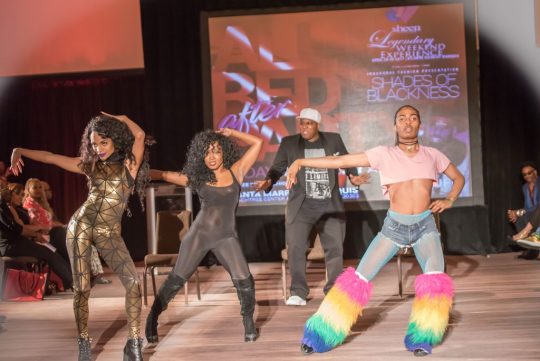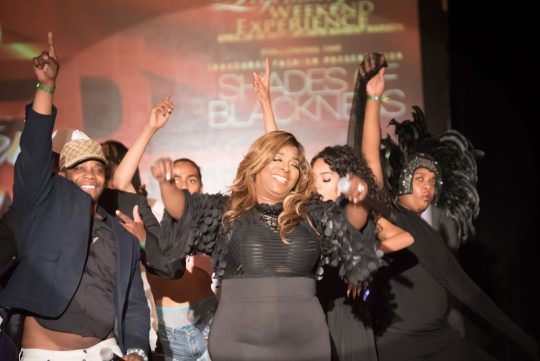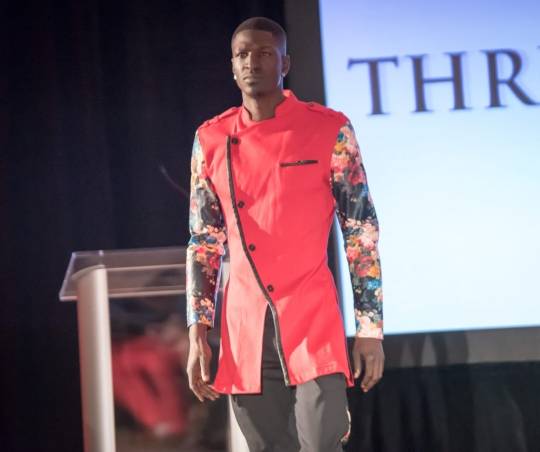#photomechanical reproduction
Explore tagged Tumblr posts
Video
Photographs Illustrative of the Cololian Method of Treating Stiff Joints: Elbow Exercises by National Library of Medicine Via Flickr: Collection: Images from the History of Medicine (IHM) Format: Still image Extent: 1 photoprint. NLM Unique ID: 101406474 NLM Image ID: A023090 Permanent Link: resource.nlm.nih.gov/101406474
#elbow exercises#photomechanical reproduction#drawing#illustration#Cololian Method#treatment#stiff joints#exercises#Still Image#Public Domain#Free Images#Prints and Photographs#P&P#National Library of Medicine#NLM#Images from the History of Medicine#IHM#History of Medicine Division#HMD#National Institutes of Health#NIH#flickr
17 notes
·
View notes
Video
Symposium: Reproductive Health In the Workplace by National Library of Medicine Via Flickr: Alternate Title(s): Symposium, reproductive health in the workplace and Reproductive health in the workplace Contributor(s): National Institutes of Health ,(U.S.). Medical Arts and Photography Branch. Publication: [Bethesda, Md. : Medical Arts and Photography Branch, National Institutes of Health, 1990] Language(s): English Format: Still image Subject(s): Reproduction, Occupational Health Genre(s): Congresses, Posters Abstract: The poster consists of a diagram of an ovum, in cranberry, orange, yellow, and tan, and an area above where light turquoise spermatozoa are swimming toward the ovum. Details about the symposium along with a phone number for information are given at the bottom of the poster. Extent: 1 photomechanical print (poster) : 81 x 58 cm. Technique: color NLM Unique ID: 101454093 NLM Image ID: C00722 Permanent Link: resource.nlm.nih.gov/101454093
#Medical Arts and Photography Branch#Photomechanical Print#Poster#Reproduction#Occupational Health#spermatozoa#ovum#Congresses#reproductive health#Still Image#Public Domain#Free Images#Prints and Photographs#National Library of Medicine#NLM#IHM#National Institutes of Health#NIH#Archives of Medicine#NLM Digital Collection#flickr
1 note
·
View note
Text

Big black cats howl as naked witches ascend into the night over the city. Color photomechanical reproduction of a lithograph by Théophile Alexandre Steinlen (1859 – 1923)
20 notes
·
View notes
Text

Janet Todd Young, Collage #20, ca. 1938-1939, photomechanical reproduction collage on paper, image: 5 1⁄2 x 8 7⁄16 in. (14.1 x 21.5 cm), Smithsonian American Art Museum, Gift of Patricia and Phillip Frost
2 notes
·
View notes
Text


Joseph Cornell, Untitled (Harlequin), ca. 1939-1942, engraving, photomechanical reproduction and string on paperboard.
6 notes
·
View notes
Text

Aimai-no-bi (Ambiguous Beauty), 1995
Yasumasa Morimura 森村泰昌, born 1951 Osaka, Japan; active Japan
Photomechanical reproduction on paper and wood fan
5 notes
·
View notes
Text
Get to Know About Professional Photography
Professional photography and video services collaborate with customers to create movies and images for a wide range of objectives, including advertising, training, documentation, and employee communication. They also offer entertainment photography in Atlanta covering stage shows, concerts, fashion events, etc.

Professional photography and video services employ digital or film cameras to help stage and light the subject being photographed. These images and films are utilized for corporate publications, instruction manuals, newsletters, and public relations. Professional photography and video services may be digital or digitally improved, and they are similarly designed or filmed. The resulting video footage is utilized for a variety of reasons, including training and marketing.
Professional photography and video services often retain data on film or digital media. Digital storage technology allows for the easy storage, access, and administration of images and movies.
Professional photography and video services make a significant contribution to the advertising sector. They can be used to attract the attention of a buyer. Professional photography may provide eye-catching images for advertisements and websites to get better outcomes. Scientists also employ photographic and video services to document and analyze movements. Artists are equally interested in these qualities, but they also seek to explore possibilities beyond the photomechanical reproduction of reality. Military, police, and security agencies employ professional photography and video services for surveillance, identification, and data storage. Amateurs utilize professional photography and video services to preserve memories of cherished times, record memorable moments, tell tales, send messages, and for enjoyment.

Areas Used
Fashion shows, product showcases, portfolios, photography for male, female, or character models, advertising campaigns, celebrity photography services, entertainment photography in Atlanta service, commercial photography services, wedding party photography services, architecture photography services, and photography for other important events are all examples of how professional photography and video services are used. Professional photography and videography services are also useful for advertising, handbooks, wall decorations, employee appreciation, marketing, and product brochures. Professional photography and videography services are sometimes employed to communicate instructions.
Professional photography and video services are one of the service businesses that provide images in the form of pictures and movies. Professional photography and videography services contribute to new developments in the recording and documenting areas.

Gregceephoto is a reliable provider of photography and videography services, with a devoted staff of skilled photographers and videographers who are enthusiastic about their work. We recognize the importance of capturing the spirit and feelings of each occasion. Our photography services span a variety of events, including weddings, business gatherings, and family photos. We work with expert photographers to generate spectacular photos that represent the uniqueness and distinctiveness of each event. Their entertainment photography in Atlanta covers stage shows, concerts, fashion events, etc. Our staff works closely with customers to understand their vision and preferences, ensuring that every aspect is recorded precisely and artistically. From candid photos to staged portraits, Gregceephoto's photographers have the skill to provide high-quality images that capture the genuine essence of the event.
#corporate photography services in atlanta#wedding photography service in atlanta#across the spiderverse#wally darling#the mandalorian
0 notes
Text
Book Illustration Styles and Techniques

The craft of book illustration transforms words into vibrant images that enthral readers of all ages and gives stories life. The craft of book illustration is essential to storytelling, from humorous pictures seen in children’s books to intricate graphics found in fantasy novels. However, what precisely distinguishes a distinctive illustration style, and how can illustrators select the methods that work best for their projects? Now let’s explore the exciting realm of book illustrating styles and methods.
Historical Overview of Book Illustration
Early Beginnings
Book illustrations have its roots in ancient cultures, when visual storytelling played a central role in the presentation of culture. Early manuscripts from Egypt, Greece, and Rome frequently included carefully drawn, hand-illustrated images to go along with the text.
Mediaeval illuminated manuscripts, especially those written by monks, had elaborate patterns and vivid hues that brought religious and literary works to life. These early images laid the groundwork for book illustration’s development as an art form and a tool for communication. They were not only ornamental; they also improved comprehension and engagement.
Evolution through the Ages
The art and technology of each era have been reflected in the extraordinary evolution of book illustration across time. Illustrators have continuously pushed the frontiers of their profession, as shown in the exquisite hand-drawn illuminations of mediaeval manuscripts and the meticulous woodcuts of the Renaissance.
The printing press, which was developed in the fifteenth century, transformed the book industry and increased accessibility to images. The introduction of lithography and then photomechanical reproduction in the 19th century greatly changed the field and made it possible for more accurate and diverse forms of artistic expression.
With the advent of digital technology, illustrators can now create and share their work with never-before-seen ease and originality.
Modern Day Illustrations
Modern illustrations are a whole different genre now that digital innovation and traditional artistry are combined thanks to technological breakthroughs. Illustrators can now use a wider variety of styles and approaches since they have access to advanced software and tools.
Richer, more detailed visual storytelling is now possible because of this progress, which has democratized the creative process. Contemporary book illustrations are created to appeal to a wide range of readers and genres, from photo realistic depictions to whimsical, abstract designs, all of which improve the reading experience.
These developments also make it easier to distribute and preserve illustrations, which guarantees the survival of artistic expression in the digital era.
Types of Book Illustration Styles
In book design, realistic illustration aims to create lifelike representations that reflect the accuracy and detail of the real world. In areas where authenticity is crucial, such historical fiction, biographies, and educational literature, this approach is frequently used.
Artists create illustrations that are nearly photographic in quality by using precise techniques to depict textures, dimensions, and light effects.
A vibrant, immersive experience that can vividly and authentically bring historical events or scientific concepts to life is what realistic artwork does to help readers engage profoundly with the information. The story is improved by this attention to detail, which makes it more interesting and relevant.
Abstract Illustration
Abstract illustration embraces shapes, colours, and forms to communicate ideas, concepts, and emotions while eschewing the limitations of realism. This aesthetic feeds on its capacity to arouse readers’ interest and awe, which frequently results in them interpreting the artwork in their own special and personal ways.
Abstract pictures work especially well in poetry, fantasy, and avant-garde literature genres where the visual depiction of ideas can amplify and enrich the creative possibilities of the story. Abstract pictures elicit a deeper, more contemplative response from readers by emphasising the content of the text rather than its details....Continue reading
#book#book publishing#self publishing#book publication#writing#book writing#literature#publishing#book writer#book authors#book publication platforms#self publishing companies#book illustration
0 notes
Text
Gravure Printing Cylinders

Gravure printing cylinders manufacturing is a complex matter which requires the ability to adapt and skillfully master all the stages in its processes. We are proud to have an experienced and dedicated team of experts in their own field that can take your product through all of the critical stages flawlessly. We are the industrial leader through innovative technologies and our company culture. Working with our clients we take your gravure printing cylinders from. No matter what your roll challenges are, you can count on our dedicated team of experts. Your surface design is created by world-leading creative embossing designers, utilizing their unrivaled technical knowledge of the opportunities and demands of - gravure cylinders.
We produce tailor-made embossing rollers with the latest laser, etching and knurling technologies and techniques, effortlessly reproducing intricate details and patterns. All our clients benefit from our experience and expertise, as we provide comprehensive support throughout the entire manufacturing journey. We create sample collections on your original materials, enabling you to experience several options before making the decision that best suits your requirements.
On the cylinders, top-of-the-line machines from the United States have been placed for filmless digital engraving. The digital file is transferred to the engraver after examining the finished layout, including press marks, on a Plotter printout. The technologically advanced engraving machines can generate a variety of cell profiles and provide customer-defined Gamma Levels, ensuring precise reproduction for specialized applications. During a high-speed engraving procedure that satisfies diverse printing requirements - rotogravure printing cylinder
We are recognized as a noted and distinct Cylinder engravers manufacturer in India and also is popularly known for producing specialized cylinders for a variety of applications as follows. A gravure printing plate made of copper is then prepared to accept photomechanical transfer using a gravure screen; this is a grid of closely intersecting lines that create thousands of tiny squares on the plate, which will in turn react differentially to an etching bath after the plate has been exposed to light through the positive film. The varying depths of the etched cells determine the tones of the printed image, with deeper cells holding more ink and thus printing darker) than shallow cells, which may hold no ink at all. For more information, please visit our site https://packadvance.com/
0 notes
Text

BLACK DAHLIA, Bruce Conner, 1960
Size: 26 ¾ x 10 ¾ x 2 ¾" (67.9 x 27.3 x 7 cm)
Medium: Photomechanical reproductions, feather, fabrics, rubber tubing, razor blade, nails, tobacco, sequins, string, shell, and paint encased in nylon stocking over wood
1 note
·
View note
Text
Journal Entry 18:
"With industrialization, particularly with the advent of photomechanical reproduction, photographs became so ubiquitous and disposable that they lost the aura of unique and precious works of art."
Trace and Transformation American Criticism of Photography in the Modernist Period, pg. 24 (page 47 of 682)
10/28/23
0 notes
Photo

Greenland falcon by Archibald Thorburn.
Colour photomechanical reproduction (1913). Published by: Alexander Baird-Carter.
© The Trustees of the British Museum.
Creative Commons Attribution-NonCommercial-ShareAlike 4.0 International (CC BY-NC-SA 4.0) license.
60 notes
·
View notes
Text

Janet Todd Young, Collage #17, ca. 1938-1939, photomechanical reproduction collage on paper, image: 5 1⁄2 x 7 1⁄4 in. (14.0 x 18.3 cm), Smithsonian American Art Museum, Gift of Patricia and Phillip Frost
0 notes
Photo

“ST. JACOBS OIL” // THE GRAPHIC, 1890 [photomechanical reproduction | 36.3 x 25.1 cm]
#the graphic#london#design#poster#typography#monochrome#photomechanical#vintage#19th century#u#advertising
36 notes
·
View notes
Photo

Bratatat!, Roy Lichtenstein, 1962, Minneapolis Institute of Art: Prints and Drawings
close-up of face of man wearing helmet and mask with "U.S. AIR FORCE"; text bubble at top Comic books were important sources for Roy Lichtenstein’s early Pop experiments, especially the genre’s distinctive pictorial conventions. The artist began Bratatat! by making a small freehand drawing based on a single comic strip panel. He then redrew the composition, much enlarged, with the aid of an opaque projector. He intentionally mimicked commercial printing, using flat areas of tone, strong contrasts, precise outlines, and stylized shading. He also rubbed the paper on perforated metal sheets to simulate the Benday dot pattern common to cheap photomechanical reproduction. For Lichtenstein, the process of manipulating and altering the source image while retaining the quirky conventions of comics was critical to the work’s ultimate meaning as fine art. Size: 20 1/2 x 16 1/4 in. (52.07 x 41.28 cm) (image) 25 1/2 × 20 3/16 in. (64.77 × 51.3 cm) (sheet) 32 3/4 x 27 1/8 x 1 7/16 in. (83.19 x 68.9 x 3.65 cm) (outer frame) Medium: Graphite and frottage
https://collections.artsmia.org/art/1574/
11 notes
·
View notes
Photo






Wood Engraving Wednesday
This week we present wood engravings by English artist, writer, and suffrage activist Clemence Houseman, from drawings by British book illustrator Paul Woodroffe, for her brother Laurence Houseman’s translation of Of Aucassin and Nicolette, printed in 1925 by the Shakespeare Head Press at Stratford-upon-Avon for Chatto and Windus in an edition of 160 copies on handmade Batchelor Kelmscott paper signed by Woodroffe and Clemence Houseman.
Prolific illustrator Paul Woodroffe had a close association with both the Arts & Crafts movement and the Shakespeare Head Press, where his college chum Bernard H. Newdigate was the principal printer.
Clemence Houseman, whose other notable sibling was classical scholar and poet A. E. Houseman, was trained in wood engraving at the South London School of Technical Art in the 1880s and worked as a commercial engraver for several illustrated journals before transitioning to fine-art wood engraving for the book trade as the periodicals she worked for began converting to systems of photomechanical reproduction. She and her brother Laurence were very close, collaborating on many activist and artistic projects together, and living with each other for most of their lives. Of her career as a professional wood engraver, Clemence Houseman observed that the “masterly translation of beautiful works into black and white is worthy employment of the talent or genius of an artist.”
View another post on the work of Clemence Houseman.
View more posts with wood engravings!
#Wood Engraving Wednesday#wood engravings#wood engravers#Clemence Housman#Laurence Houseman#Paul Woodroffe#Of Aucassin and Nicolette#Shakespeare Head Press#Chatto and Windus#Batchelor Kelmscott paper#women wood engravers
112 notes
·
View notes